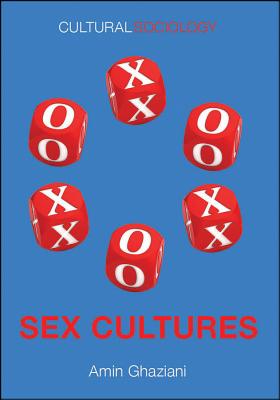 Sex Cultures
Sex Cultures
by Amin Ghaziani
Polity Books. 220 pages, $22.95
ONE OF THE DEBATES in gay and lesbian studies in the late 1980s was whether the field should stay independent or be integrated into traditional academic departments. Lesbian and gay (soon to be LGBT) scholarship was already springing up in English and French departments, but could it make inroads in history, other social sciences, and even the basic sciences? Should scholars fight for autonomous departments like Women’s Studies or Africana Studies? What might be lost in merging with mainstream academia, versus what might be gained by coaxing every discipline to take a queer perspective?
Amin Ghaziani’s Sex Cultures demonstrates how to bring LGBT Studies to a broad undergraduate audience. It’s something of a Trojan horse, however. If it were adopted as a classroom text, unsuspecting freshmen signing up for an Introduction to Sociology class might think they had accidentally walked into an LGBT Studies class. Let’s hope they stay for a wide-ranging examination of cultural sociology from a gay angle, where even “heterosexuality” is looked at with a queer eye. His central thesis is that sex and sexuality are not biologically determined, but only make sense through the lens of culture. Or, as Ghaziani schematizes it: “Sex + Culture = Sexuality.”
Ghaziani is an assistant professor of sociology at the University of British Columbia who has studied gay marches, as well as the rise and fall of gay neighborhoods: “gayborhood” seems to be the hip term for what I called the “gay ghetto.” He was recently interviewed in a New York Times article (June 21, 2017) on the decline of gayborhoods across America—an issue he tackles in the first chapter of Sex Cultures. Detailed historical work has documented the rise of gay meeting spots in large cities across the U.S. in the early 20th century. This process really took off after World War II for a variety of demographic reasons, including women entering the workforce, urbanization, and overall economic expansion. The conservatism and explicitly anti-homosexual attitudes of the 1950s also provided an impetus for the emergence of gay safe spaces around commercial strips, most often in urban neighborhoods in decline due to middle-class flight to the suburbs. Young gays and lesbians fleeing homophobic families and towns flocked to the gay ghettos to find lovers, jobs, and cheap housing.
And, being fabulous, they redecorated! Gay gentrification in the last decades of the 20th century came full circle, making the gayborhoods too expensive for all but the affluent. As Ghaziani points out, this is not simply an economic issue, though housing costs are certainly an important element. It is not just that the gay residents are older and wealthier, but new residents are wealthier and straighter. The gayborhoods have become more appealing to hetereosexuals thanks to greater cultural acceptance and even the appeal of gay culture. Just think of the throngs of straight couples and families attending pride parades and the widespread marketing of these by chambers of commerce. Greater cultural acceptance has also meant gay people can feel safe in many more neighborhoods beyond the gayborhoods. With the increasing numbers of gay couples with children, neighborhood schools are a priority instead of bars.
Ghaziani’s chapter titled “Politics and Protest” tackles the competing politics of difference versus assimilation in its many manifestations. I mentioned one aspect of the conflict at the start: the academic debate over establishing independent LGBT Studies departments versus infiltrating established departments. The broader political debates have involved inclusion of lesbians and then bisexuals and transgender people under the “gay” umbrella, but also whether issues like “gay marriage” and “gays in the military” represented conservative, assimilationist politics and the abandonment of radical separatism or, in the 1990s, a “queer” agenda. A concrete example of this tension blew up in Los Angeles this spring: the annual gay pride parade held since 1970 (but long criticized for becoming overly commercial) was canceled in favor of a protest march against the Trump administration.
Even heterosexuality gets the gay treatment here. Ghaziani is largely inspired by the work of historian Jonathan Ned Katz’ The Invention of Heterosexuality. Like the gay and lesbian historians of the early 1990s who had explored the cultural appearance of same-sex identities from antiquity to the 20th century, Katz turned the same critical lens on “normal” sexuality as it branched out from “sexual inversion” and homosexuality in the 19th century. Ghaziani’s contribution is to periodize heterosexuality since the 1980s. He points out how the AIDS crisis contributed to a harsh stigmatization of homosexuality and a sharper distinction of heterosexuality. In the 1990s, this crystallized around cultural wars defending the supposed foundations of heterosexuality: marriage, military, and Christianity (in the guise of the right to discriminate against homosexuals). The 21st century, Ghaziani argues, has seen a blurring of these sharp distinctions between gay and straight men: metrosexuals, bromances, str8 youth, and dude sex. In some ways, the pendulum of sexuality has swung back to the 19th century, when labels didn’t constrain individuals’ enjoyment of sex and affection.
Ghaziani’s final chapter deals with methodological issues in the study of sexuality. This is the most quantitative and traditionally sociological chapter, dealing with issues of constructing surveys, gathering and analyzing data, and classifying societies: their sexuality, race, political opinions, etc. LGBT issues provide a good prism for exploring these complexities. How a researcher divides up and asks about sexual behaviors or sexual orientation will subtly shape results. This is further complicated when one tries to capture information about cross-cutting identities like race, ethnicity, and class. He highlights again the importance of considering culture even in the collection of supposedly objective, quantitative data.
The American culture wars return again in the conclusion. He reviews both U.S. and international surveys about evolving acceptance (or condemnation) of homosexuality. He summarizes his thesis that sex and sexuality are not simply biological facts that have a “normal” sexuality outside of evolving cultural meanings and values. It is clear here that Ghaziani is making his last pitch to the conservative freshmen in the auditorium—those who have stuck around until the end of the semester and memorized the highlights for the final exam. But have their minds been widened to embrace and accept sexual diversity and a cultural perspective of sociology? I can only hope that Ghaziani’s book is widely adopted in classes and can enlighten a generation of youth, thus proving the revolutionary potential of mainstreaming LGBT Studies.
Vernon Rosario is an Associate Clinical Professor in the Department of Psychiatry at UCLA.






